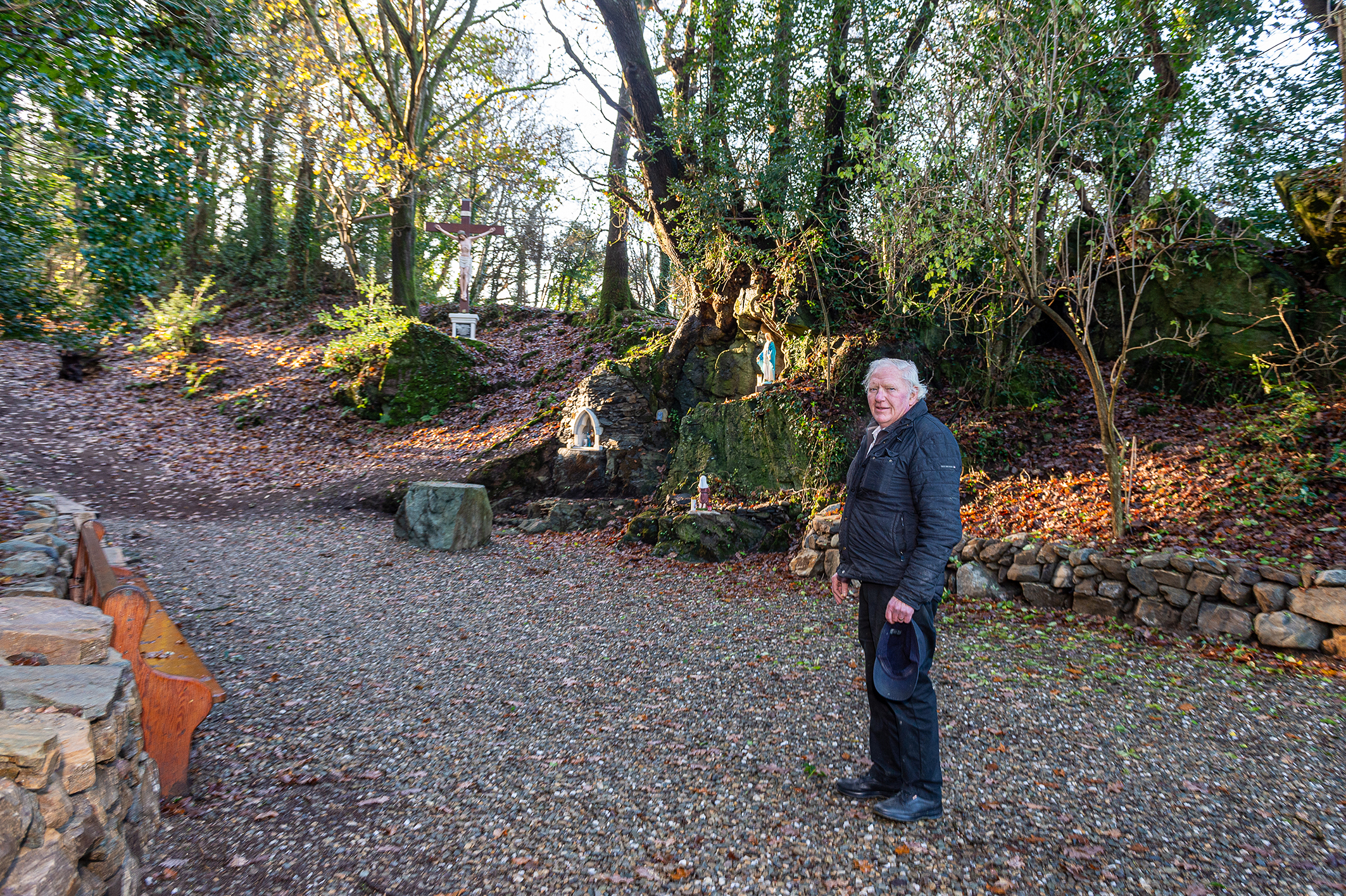It takes a certain amount of effort to see any project through, from inception to completion. But for one Strabane man, two decades of work – work which remains ongoing – is indicative of his perfect devotion to a mission dedicated to the people.
When Patsy Barrett (73) bought a patch of ground on the Derry Road in the town circa 1982, little did he know that it already had a resident, a longstanding resident in the form of an ancient Mass rock.
A huge, dark stone with a flat surface to be used as an altar, Patsy believes this particular example of our shared heritage would have been in use in the 1700s, as a location for the then illegal Catholic Mass. This illegality was a result of Oliver Cromwell’s campaign against the Irish and also the Penal Law of 1695.
Although little is known about the provenance of this Mass rock at Tulacorr, in many other instances a stone would be taken from the ruins of a church and relocated to a rural area so that people could celebrate Mass covertly.
“There just happened to be one on ground I bought,” Patsy remarked.
“I acquired the ground in ‘82, I think and I discovered from local folk and the parish that there was a mass rock on it. It was all over grown back then. I suppose, before I done anything with it I had to tame the ground.
“It was a right wee bit of work. I suppose it really started about 20 years ago. Then, when the houses were build I was able to make a proper access to it, to suit the less able bodied and push chairs and that.
“I’ve started to call it, this last 20 years, The People’s Mass Rock.”
These days though, The People’s Mass Rock isn’t merely a Mass Rock but rather, more like a local facility. Patsy has installed seating in the leafy glade and there’s also a grotto including statues, as a backdrop to the rock itself.
All of that work was done in conjunction with maintaining the area each year as the plant-life and trees around the glade grow and shed their leaves.
However Patsy is in no doubt that all of the work is worthwhile, as the importance of the Mass rock cannot be under-estimated in terms of our religious traditions.
According to website, findamassrock.com, so pervasive was the Mass Rock in the image of past persecution of Catholics that Pope John Paul II spoke of it during his 1979 visit to Ireland. Mass continues to be said at a number of Mass Rock sites today.
“It’s ongoing work, keeping it tidy, because of the growth and the fall of the leaf.
“And I’m trying to improve it by putting seating at it,” the former fruit and veg wholesaler continued.
“When I was working full time, I would have got a wee bit done every year and it worked out that every step you made, every bit of progress you made, you would look the next year to see what improvements could be make. It’s more to make it for the people rather then myself.
“And people are visiting all the time. I’ve met people at it from Germany, South America, Derry.”
Originally from the Dromore area, Patsy says The People’s Mass Rock would have been used in the middle of the 18th Century.
“Very little was written about Mass Rocks because they were secretive.
“But from local knowledge, there might have been one paragraph written about it.
“This Mass Rock would have been there in existence from the 1760s and then when things were relaxed, Mass was removed to the workhouse in Strabane, which is now the council offices on the Derry Road. Mass would have been said there for over 100 years. Mass then moved from the work house to the Sacred Heart in 1939.
“Most of the Mass Rocks that people used to visit were lost because there were dotted around the countryside.
“I personally think they should never be forgotten about because they are one of the reasons – and I am emphasising one of the reasons – why we have our faith. Our ancestors sacrificed a lot to make sure the holy sacrifice of the Mass could be offered up for the people.”
Receive quality journalism wherever you are, on any device. Keep up to date from the comfort of your own home with a digital subscription.
Any time | Any place | Anywhere
SUBSCRIBE TO CURRENT EDITION TODAY
and get access to our archive editions dating back to 2007(CLICK ON THE TITLE BELOW TO SUBSCRIBE)







